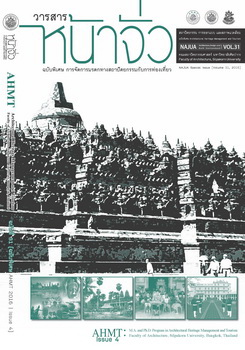Heritage Hotels in India and the Implications for Thailand: A Case Study of Raj Palace, Jai Mahal, Rambagh Palace, Samode Haveli and Narain Niwas Palace in Jaipur, Rajasthan
Keywords:
heritage hotels, palaces, forts, India, Jaipur, Thailand, boutique hotels, simulacraAbstract
The paper observes the very different trajectories of the heritage hotel movements in India and Thailand. That in India has been long established and utilises the abundance of palaces and forts surviving from the numerous princely states of pre-1947 India. Five such heritage hotels are summarised here, from a survey of the industry in Jaipur, Rajasthan. In Thailand, where there is no similar provision of grand buildings from the past that present as candidates for conversion to luxury hotels, there is some conversion of smaller buildings as boutique hotels; however, there are also new hotels built that simulate antiquity and heritage. These are replicas or simulacra – they derive codes (forms, elements) from authentic old architecture and produce entirely new constructions as a sort of fake heritage.





